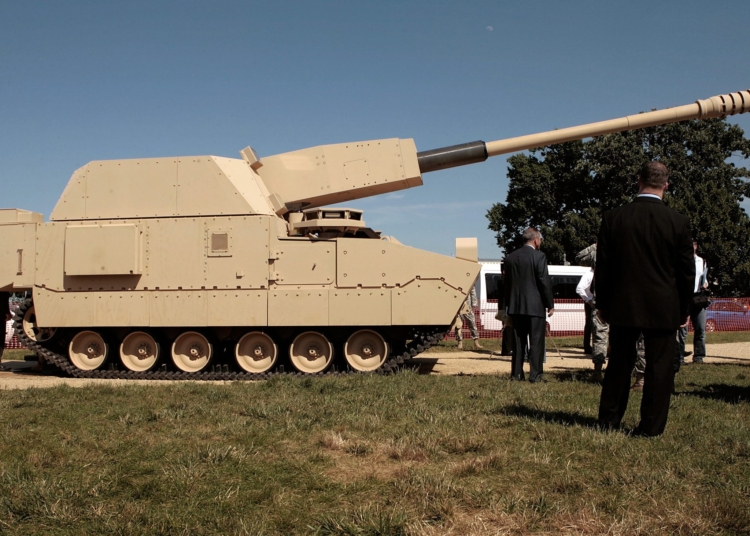This content discusses the innovations in modern military hardware. It starts with an introduction highlighting the rapid evolution of military technology throughout history. The article then explores several significant innovations, including Unmanned Aerial Vehicles (UAVs), Directed Energy Weapons (DEWs), Advanced Body Armor, Exoskeletons, and Artificial Intelligence (AI). Each section provides a brief overview of the innovation and its potential applications in the military. The conclusion emphasizes the need for responsible innovation and ethical considerations in the implementation of next-generation weaponry.
Innovations in Military Hardware: The Rise of Next-Generation Weaponry
Introduction
The world of military technology has evolved rapidly over the years. From the invention of gunpowder to the development of nuclear weapons, innovation has played a crucial role in shaping the nature of warfare. Today, we are witnessing the rise of next-generation weaponry that is pushing the boundaries of what is possible on the battlefield. In this article, we will explore some of the most significant innovations in modern military hardware.
Unmanned Aerial Vehicles (UAVs)
Unmanned Aerial Vehicles, commonly known as drones, have revolutionized the way military intelligence is gathered and air strikes are conducted. These remotely piloted aircraft can be used for surveillance, reconnaissance, and even targeted attacks. With their advanced sensors, high-resolution cameras, and long flight endurance, UAVs provide real-time information to military commanders, enabling them to make informed decisions and strike enemy targets with precision. The ability to operate without risking human lives has also been a game-changer in modern warfare.
Directed Energy Weapons (DEWs)
Directed Energy Weapons are futuristic weapons that use directed energy to engage targets. These weapons include lasers, microwave weapons, and particle beams. DEWs offer several advantages over traditional weapons, such as unlimited ammunition, high precision, and rapid engagement capability. They can be used for various purposes, including anti-aircraft defense, missile interception, and disabling enemy vehicles. Although still in the experimental phase, the potential applications of DEWs are promising, and they may soon become a key component of military arsenals.
Advanced Body Armor
The protection of soldiers on the battlefield has always been a top priority. Advancements in material science and manufacturing techniques have led to the development of advanced body armor that offers enhanced protection without compromising mobility. Modern body armor can withstand higher velocities and impacts, protecting soldiers from bullets, shrapnel, and even improvised explosive devices. Additionally, the incorporation of lightweight materials has made it possible to reduce the overall weight of the armor, allowing soldiers to operate more effectively on the battlefield.
Exoskeletons
Exoskeletons are wearable robotic suits that enhance the physical capabilities of soldiers. These suits use powered limbs and joint mechanisms to support and amplify human strength. Exoskeletons not only increase the soldier’s endurance and carrying capacity but also provide protection and reduce the risk of injuries. They can also incorporate advanced sensors and communication systems, allowing soldiers to share information and coordinate seamlessly on the battlefield. With further advancements, exoskeletons hold great potential to revolutionize military operations, enabling soldiers to perform tasks that were previously impossible.
Artificial Intelligence (AI)
Artificial Intelligence is transforming the way military systems operate. AI-powered algorithms can analyze vast amounts of data, identify patterns, and make predictions, enabling military commanders to gain valuable insights and make informed decisions quickly. AI can be utilized in various military applications, such as autonomous drones, adaptive cybersecurity systems, and decision-making support systems. Although concerns about AI weapons and autonomous warfare have been raised, the responsible and ethical use of AI can significantly enhance military capabilities and reduce human casualties.
Conclusion
The innovations in military hardware discussed in this article represent just a few examples of the rapid advancements taking place in the field. As technology continues to evolve, so does the nature of warfare. Next-generation weaponry is not only reshaping the battlefield but also challenging traditional notions of warfare. While these innovations offer great promise, it is imperative to ensure their ethical use and consider the potential consequences they may entail. The rise of next-generation weaponry calls for responsible innovation and a careful evaluation of the ethical implications associated with their implementation on the modern battlefield.












